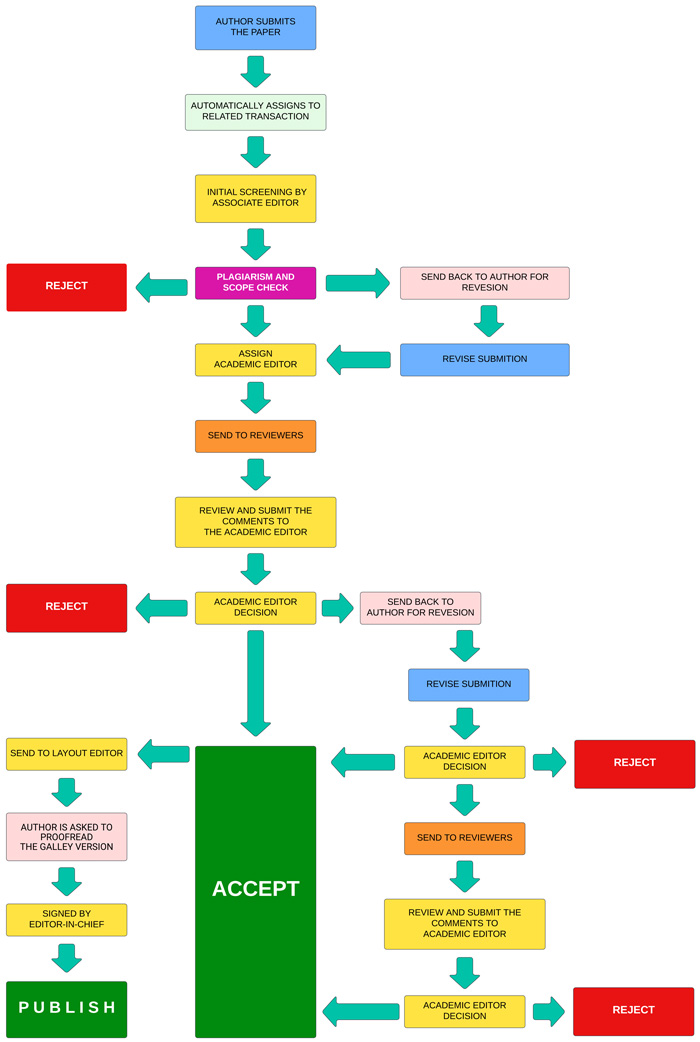Research Articles
Research articles are a type of journal manuscript used to publish full reports of data from research. They are also known as Original Articles, Research, or Articles, depending on the journal. This format is widely used in different fields of study and for various types of research studies. Research articles typically include an introduction, methods, results, and discussion sections, providing a complete picture of the research. Peer-review and indexing are important components of the scholarly publication process for research articles.
| Open Access | Open Submissions | Crossref Indexed | Blind Peer Reviewed |
Review Articles
Review articles are a type of journal manuscript that provides an overview and evaluation of existing research on a specific topic. They are designed to synthesize and critically evaluate current knowledge in the field, highlighting important findings and identifying gaps in the literature. Review articles may include a comprehensive review of literature, analysis, and interpretation of findings, and a conclusion that identifies future directions for research. They are an important resource for researchers, providing a concise summary of the state of the field and identifying important areas for future research.
| Open Access | Open Submissions | Crossref Indexed | Blind Peer Reviewed |
Technical Note
Technical notes are a type of journal manuscript used to report on new methods, techniques, or applications in a specific field. They are typically shorter than research articles and may describe a novel approach, method, or tool for solving a particular problem. Technical notes may include a brief introduction, a detailed description of the method or technique, and results demonstrating the effectiveness of the approach. They are important for disseminating innovative solutions to practical problems in a particular field.
| Open Access | Open Submissions | Crossref Indexed | Blind Peer Reviewed |
Open Access Policy
Open Access (OA) policy is a publication model that makes research articles freely available to the public, without any financial or legal barriers. OA policy allows unrestricted access to scientific research, increasing its visibility, impact, and public use. Some important policies in Open Access include:
- Green OA: Authors can self-archive manuscripts in a repository/website.
- Gold OA: Authors publish in OA journals without embargo period.
- Hybrid OA: Combines subscription-based and OA models.
- CC License: Allows others to share and build upon work with proper credit and adherence to restrictions.
- Plan S: Mandates immediate OA for all publicly-funded research articles.
Overall, OA policy is an important development in scientific publishing, allowing greater access to research articles and promoting scientific collaboration and innovation. It is expected to have a significant impact on the way research is conducted and disseminated in the future.
The published articles may be "downloaded, reused, reprinted, modified, distributed and/or copied" by anybody.

Peer Review Policy
This journal employs double-blind peer review, which means neither the reviewers nor the authors will be aware of the identity of the author(s) of the work under consideration.
Reviewers’ Responsibilities
Basic principles of peer-review policies:
http://publicationethics.org/files/u7140/Peer%20review%20guidelines.pdf
Invited reviewers are anticipated to conduct a thorough evaluation of the papers, taking into account the following elements:
- Treat the manuscript as confidential.
- Maintain anonymity and avoid disclosing reviewer identity to authors.
- Notify the editor if the assigned manuscript is being considered for publication elsewhere.
- Report any instances of possible research misconduct.
- Disclose any potential conflicts of interest related to authors or the manuscript content.
- Submit all necessary information within specified deadlines.
- Review multiple versions of the manuscript as required.
- Make recommendations to the editor regarding the suitability of the manuscript for journal publication.
- Suggest alternative reviewers if unable to review the manuscript.
- Write the review report exclusively in English and provide a commentary for publication related to the reviewed manuscript.
- Refrain from using the work described in the manuscript.
- Review the manuscript critically and provide constructive feedback to help authors enhance the quality of the research.
- Do not pass the assigned manuscript to another reviewer.
- Ensure the manuscript demonstrates high quality and original research.
During the process of manuscript review, reviewers are advised to carefully consider the following aspects:
- Reviewers should evaluate the manuscript for novelty and originality.
- They need to consider the scientific reliability of the research, including methods and results.
- Reviewers should assess the manuscript’s contribution to the scientific community.
- Ethical considerations should be evaluated for potential issues.
- The structure of the article and adherence to the author’s guidelines should be assessed.
- Reviewers should check the references to ensure their adequacy.
- Grammar, punctuation, and spelling should be checked for clarity and readability.
- Reviewers should watch for signs of scientific misconduct and report concerns.



